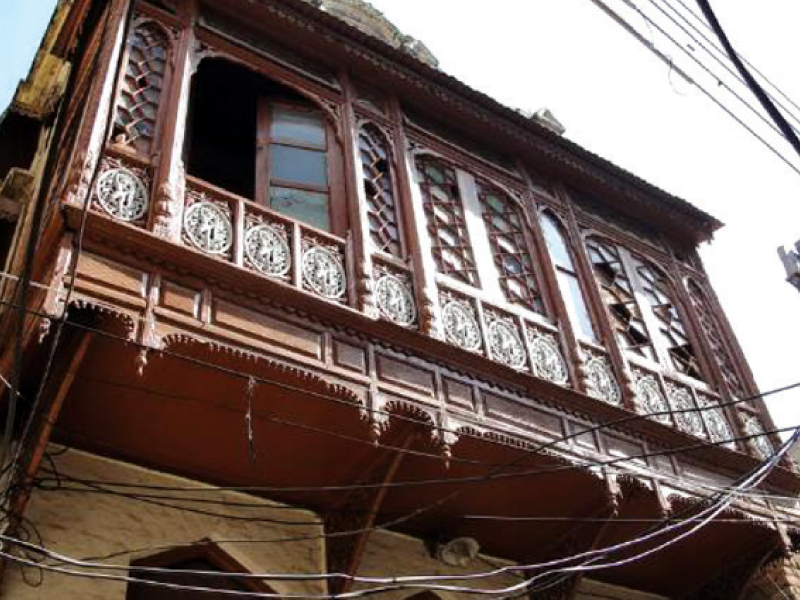
Rawalpindi’s historic inner city might gain long-term benefits and deserved recognition for its history and heritage through an ongoing pilot project, which aims to integrate management of historic resources with policies of urban development.
The Rawalpindi Historic Urban Landscape (HUL) pilot project is part of an experimental implementation of international guidelines issued by the United Nations Educational, Scientific and Cultural Organisation (Unesco) in 2011.
The guidelines were prepared in the light of new challenges posed to traditional conservation approaches by pressures of globalisation, urbanization and development, said Dr Ron van Oers, the Deputy-Director of Unesco’s World Heritage Institute of Training and Research for Asia and Pacific (WHITRAP).

Oers was giving an overview of the initiative at a policy dialogue in connection with HUL organised by the Islamabad-based Institute of Social and Policy Sciences on Thursday. The dialogue was themed around the opportunities and challenges in urban planning and local governance.
Oers said before the 2011 guidelines, development in cities was increasingly coming in conflict with people’s perception of heritage.
The new Unesco approach is not focused on traditional conservation per se. Instead it is a management approach that speaks about heritage as a living, dynamic object that needs to be understood within the urban landscape. It also relies on the significance of local communities associated with heritage and aims to integrate the management of historic sites in a city’s urban planning process, according to Oers.
An action plan to apply the guidelines consists of six points: mapping the city’s natural, cultural and historic resources, understanding the heritage values to protect, vulnerability assessment of historic resources, create a vision for city development that integrates heritage values, prioritising policies for conservation and development, and establishing partnerships for management of historic sites.

It is these points that are being implemented in the HUL pilot project in Rawalpindi, which is being undertaken by the National College of Arts (NCA) Rawalpindi, with the support from Unesco and seed money from the Netherlands funds-in-trust at Unesco.
Dr Ayesha Pamela Rogers, programme coordinator at NCA, said a 10-member team has been working for the past six months to accomplish the first three points of the action plan.
The team has looked at a study area that is composed of an important part of the Rawalpindi inner city — bounded by Circular Road in the north and Iqbal Road in the south.
The team has compiled a rapid inventory of historical buildings, conducted interviews with locals, collected oral histories of the area and looked at the religious buildings, bazaars and mohalla culture to not only get data but also make sense of it, Rogers said.
The NCA team has also looked at one sub-area to assess the vulnerability of historic buildings to change. Rogers said the three-year pilot project will continue with the goal of creating awareness about the historic sites through heritage trails and educational initiatives.
The project will not go for full-scale conservation of historic buildings but will focus on adaptive reuse of the buildings and, most importantly, on creating partnerships with private, public and civic organisations for management of historic sites after the project is over.
Speakers representing the public sector said there are deficiencies in policy, legal and institutional framework for urban planning in Pakistan. They said there should be city development strategies in Pakistan that are supported by legislative framework.
NCA Pindi campus director Nadeem Omar Tarar said the project is intended to lead to better coordination between government authorities, citizens and private organisations to bring deserved spotlight on Rawalpindi’s historical heritage.
Tarar said Pindi has dozens of historic religious and residential buildings and the success of the pilot project could lead to potential interest from donor agencies to finance preservation of these sites. There is also the potential for turning one of these sites into a museum, he said.
Oers said the project might help destigmatise the stereotypical label of garrison city assigned to Rawalpindi and its success could also pave the way for similar HUL projects in other Pakistani cities.
Published in The Express Tribune, February 7th, 2014.
COMMENTS (3)
Comments are moderated and generally will be posted if they are on-topic and not abusive.
For more information, please see our Comments FAQ



























1714024018-0/ModiLara-(1)1714024018-0-270x192.webp)









A welcome move.
This is a long due work and is commendable is being done before new landscape buries for ever what has been standing for centuries and decades and is lost for ever .You people need to be congratulated and given all assistance to make this happen truly as you have envisioned .Best of luck .
Good news! There are many cities in the world that are as congested and overbuilt but they still look good to the eyes. I believe we need to do a little cleanup and organizing job, along with removing the signs of disrepair & neglect.